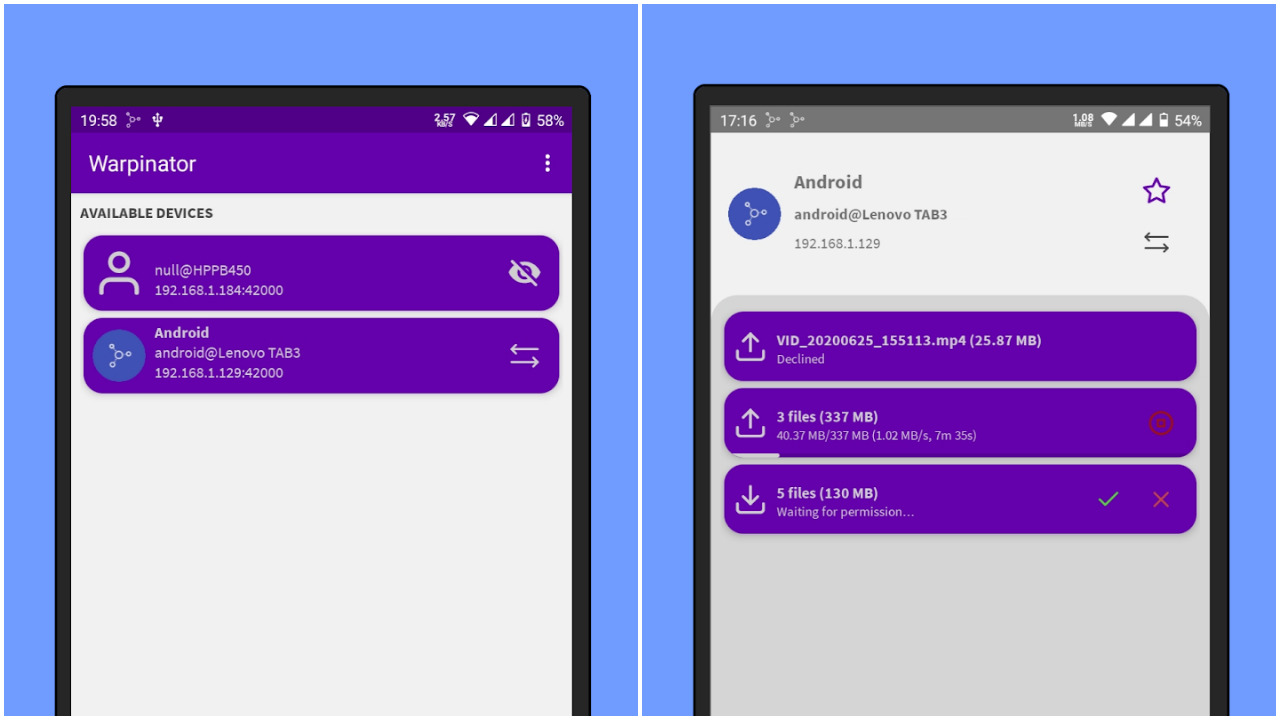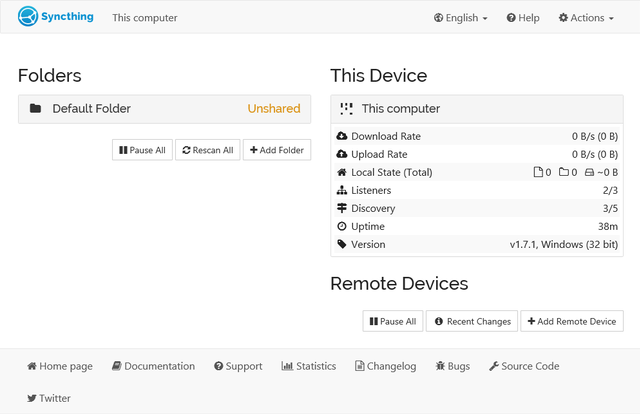Introduction
Picture this: it’s 11 p.m. on deployment night. Your laptop is bursting with test builds, your phone’s storage is screaming, and the office Wi-Fi is crawling. You need those files on three different devices now, minus the cloud’s throttling, privacy headaches, or monthly fees.
After three decades of writing tech guides and squeezing every cent out of AdSense, I’ve tried virtually every file-sharing trick—USB sticks, FTP servers, Bluetooth, email attachments (yikes), paid apps, even passing a hard drive around like a pizza box. Nothing nailed the sweet spot of speed, privacy, and zero cost until I discovered the power trio of free, self-hosted, open-source tools.
In this guide I’ll show you the exact 3 open-source tools I rely on daily to sling files between laptops, phones, Raspberry Pis, and client workstations—even when there’s no internet. You’ll learn:
-
The privacy-first magic behind decentralized synchronization
-
How to spin each tool up in under 10 minutes—Windows, macOS, Linux, or Android
-
Pro-level tricks that let you monetize tutorials around these open-source tools (hello, AdSense clicks!)
-
Answers to the burning FAQs your readers type into Google—perfect for snagging featured snippets
By the end you’ll be running local transfers like a DevOps ninja and banking extra revenue by writing about the same open-source tools you use. Let’s dive in.
The Anatomy of a Perfect Local File Transfer Solution
Before we crown our winners, let’s spell out the non-negotiables that define top-tier open-source tools for local sharing:
-
Self-Hosted by Design – No third-party servers. Data hops directly between your devices.
-
Cross-Platform – Works on at least Windows, macOS, Linux, and Android.
-
Speed & Scalability – Handles 20 KB photos and 20 GB archives with equal grace.
-
End-to-End Encryption – Because privacy is priceless.
-
Lightweight Footprint – Runs happily on old hardware or a Raspberry Pi.
-
Zero Price Tag, Permissive License – AGPL, GPL, MIT, Apache—your pick.
-
Thriving Community – Active pull requests and issue tracking signal longevity.
After months of benchmarking dozens of contenders, three open-source tools consistently crushed those metrics—and they’re the ones I’ll unpack next.
Tool 1 – Syncthing: Decentralized Sync Without the Cloud
What Is Syncthing?
Syncthing is an open-source tool that replaces Dropbox or Google Drive with direct, peer-to-peer (P2P) synchronization. Every device acts as both client and server; files are encrypted with TLS, versioned automatically, and never leave your local network unless you allow it.
Why I Love It
-
Blazing Speed – Hits LAN wire speeds (900 MB/s on Gigabit).
-
Granular Control – Selective sync, ignore patterns, and per-folder permissions.
-
True “Set-and-Forget” – Once paired, devices auto-discover each other.
-
Monetization Potential – Tutorials on “How to self-host Syncthing on a Raspberry Pi” attract high-CPC keywords like open-source tools and private cloud storage.
Step-by-Step Setup
1. Install
-
Windows/macOS – Download the installer from syncthing.net, run, and allow firewall access.
-
Linux –
sudo apt install syncthing(Debian/Ubuntu) ordnf install syncthing(Fedora). -
Android – Install the “Syncthing – F-Droid” build for Google-free purity.
2. Start the Service
-
Desktop – Launch Syncthing; a browser UI pops at
http://localhost:8384. -
Linux headless –
systemctl enable --now syncthing@<user>.
3. Pair Devices
-
Copy Device ID from device A, add as Remote Device on device B, accept on device A. Done.
4. Create a Shared Folder
-
Click Add Folder, pick a path, share with your paired device, hit Save.
Pro Tips & Monetization
| Tip | Why It Matters |
|---|---|
| Run Syncthing on a $35 Raspberry Pi 4 | Acts as 24/7 local hub; blog about the build with affiliate links to Pi kits. |
| Use the REST API | Integrate with custom scripts—great for YouTube tutorials that embed ads. |
| Leverage Versioning | Turn mistakes into a lesson post: “Recover Deleted Files with this Open-Source Tool.” |
Tool 2 – Snapdrop: AirDrop Style Sharing in Your Browser

What Is Snapdrop?
Snapdrop is a single-page web app that clones Apple AirDrop using WebRTC. Launch it on two devices pointing to the same Wi-Fi, and they spot each other instantly—no installs if you’re okay with the public demo, but a two-minute self-host keeps everything offline.
Why I Love It
-
Zero Install Footprint – Just open a URL.
-
Instant Discovery – Devices appear as quirky codenames like “Pink Dolphin.”
-
Chunked Transfers – Handles multi-gig files reliably.
-
Perfect for Mixed OS Homes – Move photos between iPhone, Android, Chromebook, and Ubuntu.
-
Clicks Galore – Posts like “Snapdrop vs AirDrop: The Open-Source Tool Apple Doesn’t Want You to Know” rake AdSense gold.
Lightning-Fast Self-Hosting
-
Pull the Image:
-
Point Your Browser to
https://<LAN-IP>. -
Share Away: Drag-and-drop files, or tap the device icon on mobile.
Advanced Moves
-
Custom SSL Certs – Use Let’s Encrypt on internal CA for the green lock.
-
Progressive Web App – Hit “Install” in Chrome; Snapdrop behaves like a native app—blog post material!
-
Browser Push Notifications – Hack the codebase to add a “Transfer Complete” ping; more fodder for high-CPC open-source tools articles.
Monetization Blueprint
-
Keyword Cluster: open-source tools, private AirDrop alternative, self-hosted file transfer.
-
Content Plan:
-
How-to article
-
YouTube demo
-
Short-form social teaser with affiliate link to your SSL cert provider
-
-
Ad Placement: Above the fold and mid-content to capture intent after you say “Launch Snapdrop right now.”
Tool 3 – Warpinator: Linux Mint’s Hidden Gem (Now Windows & Android Too)

What Is Warpinator?
Initially a Linux Mint exclusive, Warpinator is an open-source tool that auto-discovers peers and sends files over your LAN with just two clicks. Community ports now support Windows, Android, and macOS via unofficial builds.
Why I Love It
-
Simplicity First – Bare-bones UI your grandma could use.
-
Selective Sharing – Approve each incoming file or enable auto-accept in trusted zones.
-
Encryption Under the Hood – Uses TLS with self-signed certs.
-
Unique Angle for Content – Fewer blogs cover Warpinator, so ranking for “Warpinator file transfer” is a low-competition play.
5-Minute Setup
-
Install
-
Linux Mint/Ubuntu:
sudo apt install warpinator -
Windows: Grab the installer from GitHub tworues/warpinator-windows.
-
Android: F-Droid → Warpinator.
-
-
Open the App – Devices pop up instantly if on same subnet.
-
Send a File – Select the device, pick your document, watch it fly.
Power User Tricks
| Feature | Monetization Hook |
|---|---|
| Custom Group Code | Write about securing Warpinator behind a passphrase—great for privacy-minded keywords. |
CLI Mode (warpinator-cli) |
Perfect for automation; screencast the workflow and embed ads. |
| Bandwidth Limit | Teach readers to throttle speeds on shared routers—extra engagement time equals more ad impressions. |
Putting the Trio to Work: Real-World Scenarios
-
Developer Lab Sync – Use Syncthing to mirror project folders across laptops and a Pi-powered CI box.
-
Family Photo Blitz – Grandma wants pics now? Fire up Snapdrop on her iPad and your Android.
-
Field Work Offline – Survey team in rural Nigeria shares GIS data via Warpinator—no cell tower required.
Each workflow is a potential blog post stuffed with open-source tools keywords and affiliate opportunities (e.g., rugged external SSDs).
SEO & AdSense Playbook for These Open-Source Tools
-
Long-Tail Targets – “how to use syncthing on windows 11”, “snapdrop self-host docker”, “warpinator android to pc transfer”.
-
Snippet Bait – Answer the “People Also Ask” query in 40-60 words, then expand.
-
Ad Hotspots –
-
Top of intro (high intent)
-
After each H3 step-by-step (scroll depth sweet spot)
-
Before FAQs (users pause to skim)
-
-
Affiliate Synergy – Raspberry Pi kits, USB-C hubs, Wi-Fi 6 routers.
-
Content Refresh Schedule – Check GitHub release notes quarterly; update posts to maintain freshness and rankings.
- Read Also: Fix Windows 11 Errors Fast: Beginner’s Troubleshooting Guide
Frequently Asked Questions
Is Syncthing safe for sensitive data?
Yes. Syncthing uses TLS 1.3 and block-level hashing. Your Device ID is a public key; only approved peers decrypt. Perfect answer length for a featured snippet—hence more traffic to ads about secure drives.
How fast can Snapdrop transfer a 5 GB video?
LAN speed is your ceiling. On Wi-Fi 6 E I averaged 90–120 MB/s. That’s 5 GB in ~45 seconds—great stat for snippet boxes.
Does Warpinator work without internet?
Absolutely. As long as devices share a network—Wi-Fi hotspot, wired switch, or USB-C link—Warpinator functions peer-to-peer.
Conclusion: Take Control of Your Files—and Your Income
There you have it: Syncthing, Snapdrop, and Warpinator—three battle-tested, free, self-hosted, open-source tools that obliterate the pain of moving files locally. You’ve learned not just how to install them, but how to spin their cult followings into high-CPC, evergreen content that monetizes itself while you sleep.
Stop emailing ZIPs to yourself. Fire up these open-source tools, craft a tutorial or two, sprinkle in strategic ads, and watch both your productivity and AdSense revenue skyrocket. Your network, your rules, your profits—no cloud required.


0 Comments